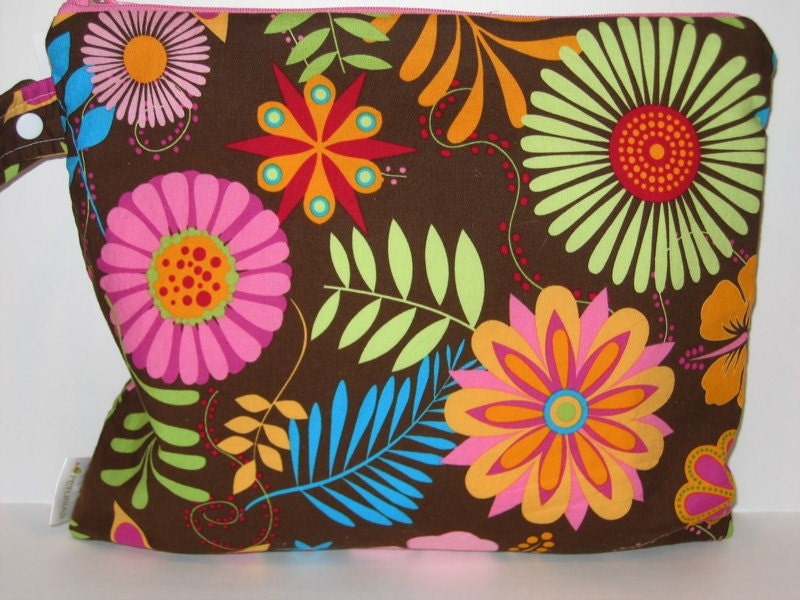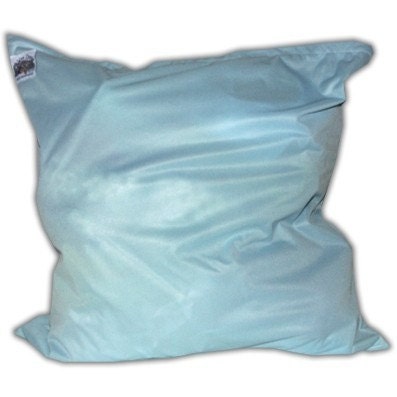One of the things that's so awesome about the world of handmade cloth diapers is the variety that's available. Mass produced diapers and disposable diapers come in one or two options, but handmade? Home sewers can create diapers out of dozens of utilitarian or luxurious fabrics. This is great for the shopper, because it means you can get exactly what you want - if you know what you want.
The main problem with this sometimes dizzying array of choices is that it can be hard for the average person to keep up with all the choices.
What's the difference between microfleece and microfiber? Why would I want jersey or woven cotton? Should I choose sherpa or hemp? What exactly are sherpa and hemp, anyway?
Well, I'm here to help guide you through the different materials available in diapers, so just keep on reading!
First, the difference between FIBER and WEAVE.
Fiber refers to what kind of plant or animal a particular piece of fabric came from. Cotton, Hemp, Wool, and Rayon are all fibers.
Weave refers to how the fibers were made into fabric. Jersey, flannel, terrycloth, twill, denim, fleece. Those are all types of weave.
Put those two together and you have an excellent description of a piece of fabric - Cotton twill. Hemp flannel. Wool jersey.
So now you can see that just describing something as "hemp" doesn't give us quite enough information. My shower curtain is made of hemp, but you wouldn't want that anywhere near your baby's delicate rear end - it's made of hemp canvas. (Canvas is a rather coarse weave, not soft at all.) But hemp jersey, hemp flannel, hemp terrycloth - those are all great fabrics for diapers. By the same token, a polyester flannel would be a terrible choice, but a cotton flannel would be fine. Both the FIBER and the WEAVE are important to know.
First, the fibers.
Let's start with natural fibers. These are fibers that started out as something alive. Natural fibers are, as a rule, absorbent and breatheable. They are also renewable.

Wool: Wool comes from sheep. It's breathable, resistant to fungus and mildew, able to absorb 30% of its weight without feeling damp, and PERFECT for diaper covers. Wool contains natural lanolin which helps a wool cover function like it does (keeping moisture where it belongs). Wool is long-lasting and very durable. It does require special care in the laundry.

Hemp: Hemp comes from the cannabis plant - but, no, you cannot smoke it. "Industrial hemp" as it is sometimes called, is very low in THC (the psychoactive ingredient in marajuana) but high in CBD (an antipsychoactive ingredient) - it would just give you a headache, apparently. (Source) The hemp used in cloth diapers is rarely 100% hemp; it is usually a blend with cotton.
Hemp is one of the strongest and most durable of the natural fibers. Hemp is also naturally resistant to mold and ultraviolet light. Because hemp fibers are porous, hemp fabric is more water absorbent than any fabric including cotton. Hemp also has environmental benefits. It is very fast growing, producing more fiber yield per acre than any other fiber. It also leaves the soil in excellent condition, and doesn't tend to need chemicals such as pesticides or fertilizers. (Claims that this makes hemp "naturally organic" are a bit overstated, however.) Because it is not legal to grow hemp in the United States, all hemp materials are imported.
All hemp fabrics tend to stiffen up a bit with the first few washes, but soften over time. And a bonus random fact: Betsy Ross sewed the first American flag from hemp.

Cotton: Cotton is made from the seed pods of the cotton plant. It is soft, absorbent, and breathable. It's widely aavailable and inexpendive.
Today's cotton is typically grown from genetically modified seeds, which were introduced to somewhat lessen the heavy dependence on insecticides, although the genetic modification is not effective against all cotton pests, and cotton remains a heavy user of fertilizer and insecticides. (Source)

Silk: Silk is made from the fibers of the silkworm's coccoon. It is one of the strongest natural fibers, but loses significant strength when wet. Because of this, and because it is prone to getting stretched out, silk should be handwashed. Some people recommend raw silk liners to help with diaper rash.
There are many more natural fibers, but they are not widely used in cloth diapering.
Now synthetic fibers. These are fibers that started out in a lab somewhere. Synthetic fibers are, by definition, not absorbent. Generally speaking, they started life as petroleum.
Polyester: Polyester is a synthetic polymer made of some complicated compounds that scientists somewhere combined and poof: the seventies were born. Today's polyesters are much more appealing than those of a few decades ago, and there is a growing market for polyesters made from recycled materials, such as pop bottles. Because polyester is nonabsorbent, Polyesters are used primarily for diaper covers (as PUL and as fleece) and for stay-dry layers (microfleece, suede), though they also make an appearence in some soaker pads and inserts as microfiber.
Nylon: Nylon is a thermoplastic silky material (means nothing to me, either) that was originally developed as a replacement for silk. In cloth diapering, nylon is most commonly used in PUL diaper covers.
Again, there are many more synthetic fibers, but they are rarely used in cloth diapering.
Now for a fiber that's a little bit of both.

Rayon: Rayon is a funny fabric – it starts as something natural (trees, or bamboo) but goes through so much processing that it pretty much loses most of the properties of the material it started out as. And this processing is highly toxic. Most of the rayon we typically think of (in dresses, shirts, etc) started out as trees.
But the rayon we encounter in cloth diapering is typically Bamboo rayon - fabric that started out as bamboo. Any time you see "bamboo," it should say "rayon made from bamboo." Bamboo fabric = rayon.
Kathleen at Fashion Incubator had an excellent article about this a while back, that's worth a read. She says, in part, "The FTC is concerned that consumers are being misled by greenwashing. Although rayon is a natural but man made fabric, rayon production is highly toxic (Avtex, the largest EPA Super Fund clean up site was a rayon plant)." Crafting a Green World also has a great article about Bamboo rayon that mentions, in part, that bamboo rayon's recent popularity is resulting in overharvesting of some species of bamboo.
Some diapers are also made from soy rayon. According to Crafting a Green World, "One of the coolest things about soy fiber is that it’s made using the byproducts from the creation of soy foods like tofu. That means soy isn’t grown just for fabric purposes, and that soy fabric production helps reduce waste. The process for making the fabric ...is very chemical-heavy, but unlike a lot of rayon made from bamboo, it’s a closed-loop system, meaning they reuse the chemicals over and over rather than dumping them." (Source)
This is neither a fiber nor a weave, but an optional designation.
Organic: "To gain organic certification, a farm must have been inspected by an accredited certification organization using strict national or international standards. Farmers raising organic fiber follow standards that nurture the soil or animal from which it comes and do not use toxic insecticides, herbicides or fungicides." (Source)
Organic fabrics tend to be softer and can be more absorbent than their non-organic counterparts.
Written by Sarah Reid
http://boulevarddesigns.etsy.com
http://www.wallypop.net




